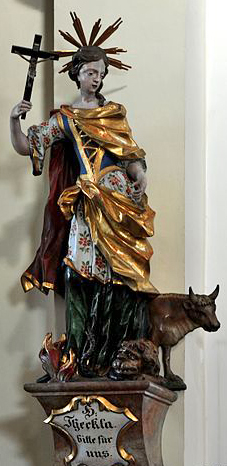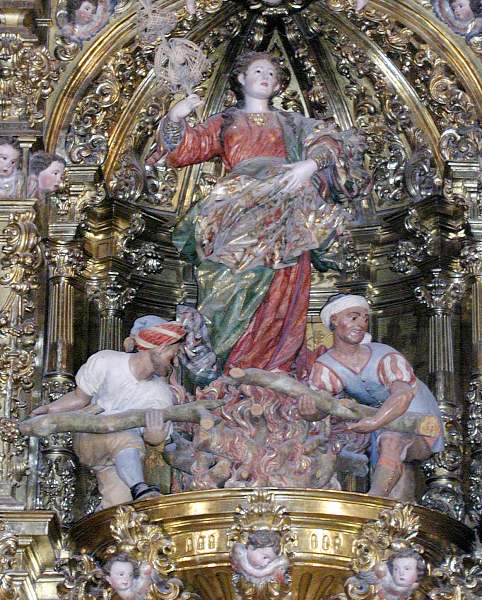Having survived all these attempts on her life, St. Thecla went on to live for another 72 years as a hermit in a cave in Seleucia, Syria. Even though she died a natural death, she was universally revered as a martyr. Indeed, the martyrology of the Greek Church lists her with the title, "Protomartyr among women and equal to the Apostles."1 St. John of Damascus' eighth-century hymn to St. Thecla seems to imply that it was her willingness to be a martyr that made her one. ("You chose to die, and now you live to the ages.")
The Acts of Paul and Thecla was rejected as spurious by both Tertullian in the 3rd century and Jerome in the 4th. Nevertheless, Thecla's story continued to influence western art at least intermittently until 1969, when the Roman Catholic Church suppressed her cult. In 1630 the people of Este, Italy, credited St. Thecla with interceding for them during a plague. In the following century Tiepolo painted a commemoration of that event.
Prepared in 2015 by Richard Stracke, Emeritus Professor of English, Augusta University. Revised 2016-12-27.

St. Thecla's statue in Judenburg, Austria – with bull, lion, fire, and cross (See the description page)

Antoni Szulczynski's St. Thecla with lion, torch, and palm branch (See the description page)

The Iconians try to kill the saint by fire: the St. Thecla Altarpiece in Burgos Cathedral (See the description page)
DATES
- Feast day: September 23 (suppressed in 1969)
BIOGRAPHY
- The Acts of Paul and Thecla.
- John of Damascus, Canon to the Holy Protomartyr and Equal of the Apostles Thekla.
- Roman Breviary: 1908 English translation, IV, 581; 1632 Latin version, 1046.
- Acta Sanctorum, September vol. 6, 546-68.
- Metaphrastes' Greek Life of Thecla with Latin translation: MPG, CXVI, 821-45.
NOTES
1 Catholic Encyclopedia, s.v. "Sts. Thecla."